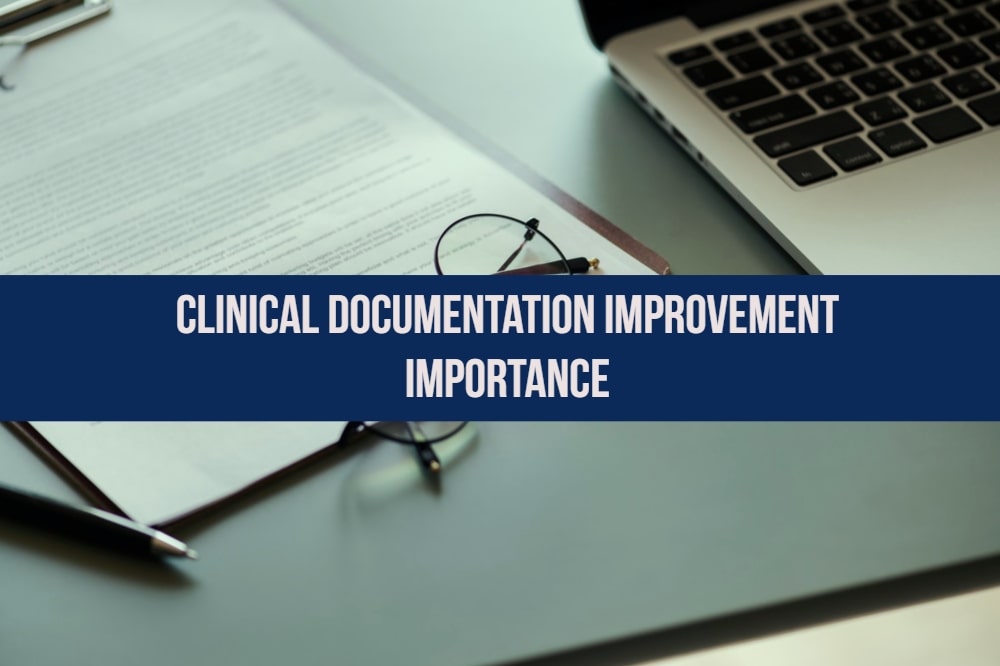To provide the best possible healthcare to your patients, it is important that your healthcare providers are up to the task. But, how can you ensure that the healthcare providers you hire are competent and qualified for the job?
In the following article, I’m going to show you why Provider credentialing is the best way to compare, evaluate and verify the qualifications and competency of the healthcare providers that you are hiring.
However, provider credentialing is no easy task – considering the quantum of information that must be collated, checked and analyzed before accepting a healthcare provider at your facility.
The Origin of Provider Credentialing
The verification of physician and other providers’ credentials became mandatory in the 1960s after the conclusion of Darling v. Charleston Community Memorial Hospital case.

Following the closure of this landmark suit, the credentialing process helped organizations to protect themselves from similar lawsuits.
Now:
Credentialing refers to the examination, review and verification process and assessment of the candidate’s certifications, education and experience to ensure that they are accurate and that all work and other criteria are in order.
Many patients only know a little about their doctors’ qualifications. In fact, the only thing they know is what the doctor hangs on their office wall.
It is ironic that patients can access qualification details about their lawyer or mechanic but the person to whom they go to when most vulnerable, they don’t know enough information about.
Moreover, some people are confused about the abbreviations listed on the physician’s diplomas.
The Importance of Medical Provider Credentialing
Medical credentialing is increasingly becoming crucial as it enables patients to have trust in their physicians. Credentialing only takes place via a standard procedure that incorporates data collection, primary source verification and other healthcare agencies.
This helps to assure patients that their healthcare provider is experienced enough. With major improvements in medical technology, credentialing remains an important area for improving efficiency and processes.

In many cases, doctors need to take part in long, paper-based credentialing processes before getting a contract or getting an affiliation to a hospital. Nonetheless, this load may be reduced through digital credentialing.
This creates the promise that healthcare providers will have a positive impact on quality.
I am not going to lie to you…
Medical errors cause around 98,000 American deaths annually. It is no surprise then, that industry leaders continue to fight for better standards to improve competency and improved working standards. This is why even medicare provider credentialing is vital.
It is also the reason why there is the need for publicizing disciplinary action against errant health care workers.
And that’s just the tip of the iceberg…
One problem with credentialing is that many organizations continue to use manual, paper-based processes that are not only slow but also will never guarantee the provider’s credentials.
Now you know how important healthcare provider credentialing is. Here are the essential steps to ensure a thorough and effective provider credentialing process.
Provider Credentialing Process Flow: Follow These Steps to Ensure Proper Provider Credentialing
Use the following guide as a provider credentialing checklist. Consider these steps in provider credentialing.
Identify and list potential candidates
The first step is to identify available healthcare providers and approach them through a staff member to determine whether the provider would be interested in applying for credentialing.
Once the healthcare provider shows interest, a credentialing application package can be sent to them to fill and return. Be specific about the required information.
Ensure that you provide specific instructions to the potential provider about the required information for credentialing.
This could include education details, work history, certifications, licenses, malpractice liability certificate and more. You also need to ensure that the potential provider is aware of the deadlines for submitting the data.
Personal and peer references
References are a way to qualify the potential providers standing amongst their peers. Insist on at least three references from peers who are in the similar field as the provider.
However, none of these references should be from either family members or members of the provider’s practice.
Verify and check the background
Verification and background check is the most crucial and time-consuming part of provider credentialing. It is imperative that each piece of information given by the prospective provider is thoroughly checked and re-checked by a staff member.
This can be done through the CAQH website. The areas that require verification and checks include:
- Education history
- Employment history
- Current medical licensure
- Medicare sanction information
- Closed and settled claims history
After a satisfactory verification of the above, you need to check on the personal references that the potential provider has submitted.
Discard poor applications
Provider credentialing is expensive as it requires a staff member to sift through the information, verify and make background checks, prepare and send correspondence and follow up. This requires both time and money.
Look:
It thus makes sense to weed out applications that do not match the requirements or seem unlikely to come to fruition.
Check malpractice details
A malpractice suit or settlement does not necessarily disqualify a potential provider.
Ask the potential provider to explain the situation and the reasons for the suit/settlement and compare the same with the providers claim history through the National Practitioner Bank.
Verify privileges
Healthcare providers applying for privileges at a hospital receive a list of approved procedures for their specialty. You should contact the provider’s affiliated hospitals and request for a list of privileges that the potential provider holds there.
Alternately, you could also ask the potential candidate to provide documentation that proves their training for the specific procedure. This will ensure that the potential provider is trained and experienced in those procedures.
Keep track of the progress
Provider credentialing is a cumbersome task as it is, and it will do no good for the facility if critical steps or data is missed. The credentialing staff needs to keep track of all documentation and follow-ups that take place.
Here’s why…
Keeping a checklist is the easiest way to do this – however, you need to ensure that the checklist is checked regularly. This will ensure that all steps taken towards the credentialing process are up to date and all follow-ups are taking place as required.
Outsource the process
Provider credentialing and enrollment involves much more than just filling out forms. It is crucial to understand the importance of provider credentialing and enrollment in relation to the revenue stream of the organization and how it affects the accurate reimbursement for services rendered.
Outsourcing the job of provider credentialing and enrollment to a competent and experienced organization ensures savings in both time and money. This also leaves your staff to do what they do best – look after the patients.
What Would Happen Without Provider Credentialing?
If a single human error is made when handling the huge amounts of physical documents required for credential verification, a nurse may receive authority to conduct services that are way past their expertise.
Similarly, a doctor whose license is expired may continue practicing. This may result in extremely negative effects on the patients, the doctor’s profession and the reputation of the affiliated organization.
In the past, hospitals have considered the credentialing process as a tiring task. They have, thus, ignored the likely merits of a rationalized credentialing method.
Here goes:
Healthcare facilities need to understand the cost-benefits, efficiency and risk reduction of a digital credentialing platform. It will help them avoid the last-minute check for credentials.
Hospitals tend to avoid a more continuous credential monitoring because of the cost and time involved in manually validating employee records against a number of primary records.
In fact, acquiring data manually about one provider could take anywhere from a couple of days to a few weeks to accomplish.
It is no surprise that regulatory bodies place greater pressure on healthcare institutions to automate credentialing and have more access and meet targets for enhancing the care quality while lowering the costs overall.
How Outsourcing Can Make Provider Verification Easier
A hospital may use credentialing verification organizations that have robust online applications integrated to provider data collection, reporting, and verification. This can also help increase the incorporation of digital credentialing.
We refer to such organizations as providers of credentialing services.
They help healthcare institutions to minimize waste and fraud by keeping provider data in a central location to ensure access throughout the organization, allowing it to meet ongoing compliance requirements for crucial staff qualification.
Here’s the deal:
It is important that credentialing verification organizations offer a robust package to increase their viability of this option for hospitals. At the very least, the solution should have a way for fetching and manipulating digitized data.
Electronic credentialing should also provide a way to continuously verify the physician’s background, and produce status reports that complementing other credentialing aspects and ensure adherence to legal requirements.
Why?
Electronic credentialing is a response to the problems of manual processes. Not only does it eliminate errors, but also reduces labor costs. Most importantly, electronic credentialing allows institutions to study healthcare providers in an instant.
Today, medical professionals are expected to guarantee more safety for patients than ever before. Provider credentialing helps safeguard organizations from financial ruin while reducing expenses. With real-time credentialing, it’s possible to achieve these goals.
Conclusion:
In the modern litigious society, the smallest of medical missteps may cost the institution hundreds of thousands of dollars in medical and legal costs. Physicians, hospitals, and healthcare organizations are targets for lawsuits.
This is particularly so when the organizations fail to totally verify the professional credentials of their practitioners and other people in their employ.
For smaller practices, this can be particularly difficult because of time, staffing and other limitations that make it hard to perform a thorough check of the associate’s background.
References
- 8 best practices for successful credentialing. (2016, October 24). Retrieved August 22, 2017, from www.credentialingresourcecenter.com: https://credentialingresourcecenter.com/articles/8-best-practices-successful-credentialing
- CAQH Launches New Solution to Improve the Provider Credentialing Process. (2017, April). https://www.caqh.org/about/newsletter/2017/caqh-launches-new-solution-improve-provider-credentialing-process .
- Credentialing. (2017). Retrieved August 22, 2017, from www.bcbsil.com: https://www.bcbsil.com/provider/network/credentialing.html



